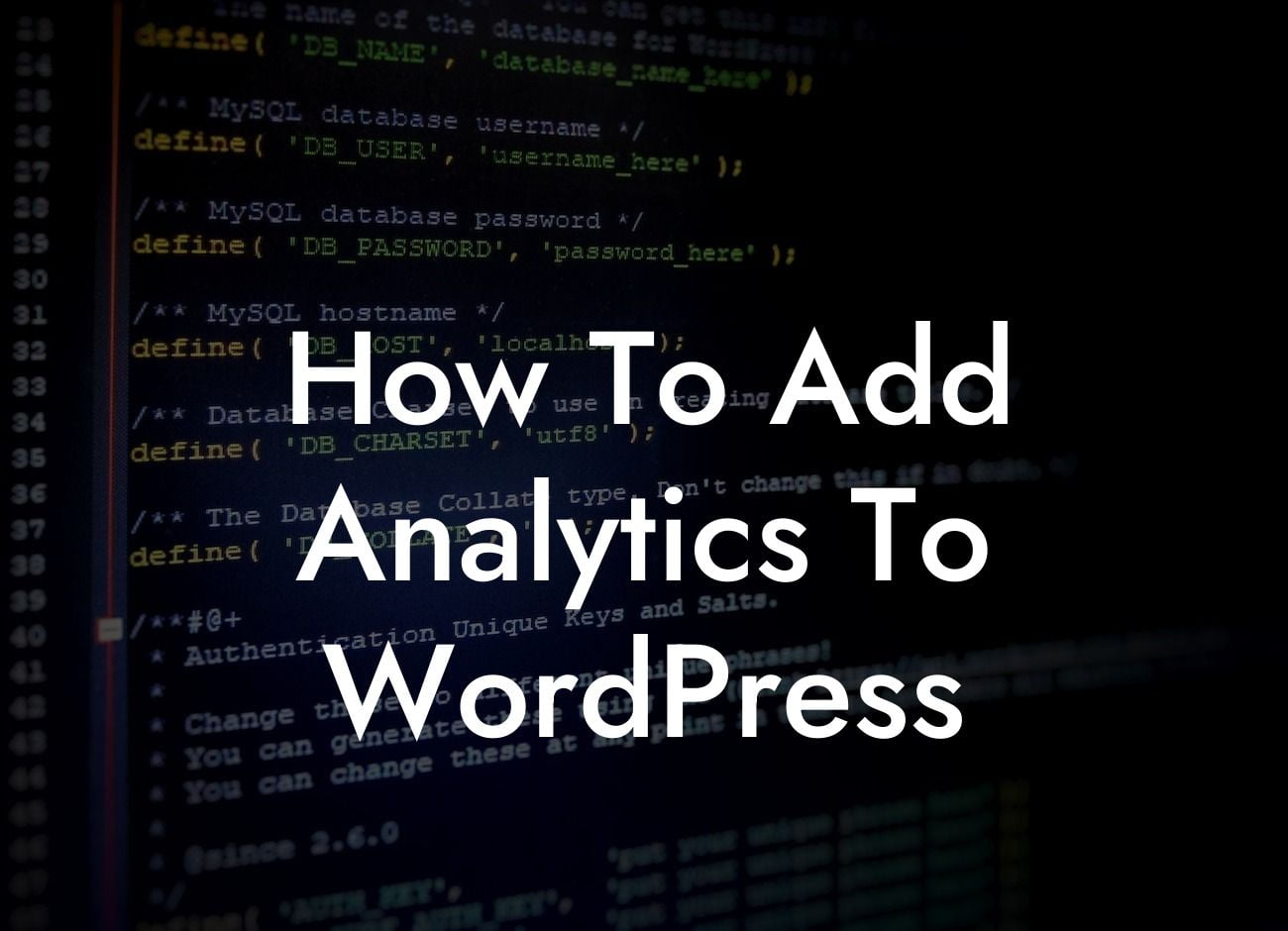Are you making data-driven decisions for your WordPress website? As a small business or entrepreneur, it's essential to track and analyze important website data to optimize your online presence. In this guide, we will show you how to add analytics to WordPress, guiding you through the process step by step. With the help of DamnWoo's powerful WordPress plugins, you can elevate your website's performance and take your online success to new heights.
Adding analytics to your WordPress website is crucial for understanding your audience, measuring your website's performance, and making data-driven decisions. Follow these steps to seamlessly integrate analytics into your WordPress site:
1. Choose an Analytics Platform:
Start by selecting an analytics platform that best aligns with your business needs. Popular options include Google Analytics, which offers a robust suite of features, and MonsterInsights, a user-friendly plugin that simplifies the integration process.
2. Set Up Your Analytics Account:
Looking For a Custom QuickBook Integration?
Create an account with your chosen analytics platform and obtain your tracking code. For Google Analytics, sign up for an account and follow the instructions to generate a tracking code specific to your website.
3. Install a WordPress Analytics Plugin:
Install and activate a WordPress analytics plugin to simplify the integration process. DamnWoo offers a range of powerful plugins designed specifically for small businesses and entrepreneurs. With their intuitive interfaces and extensive features, you can effortlessly integrate analytics into your WordPress site.
4. Configure Plugin Settings:
Once you've installed the plugin, navigate to its settings and enter your analytics tracking ID or code. This step establishes the connection between your website and the analytics platform of your choice.
5. Verify Analytics Tracking:
To ensure accurate tracking, verify that analytics is properly installed on your WordPress site. Depending on the plugin you're using, this may involve a simple "Connect" or "Verify" button. Once connected, the analytics platform will start collecting valuable data about your website's performance.
How To Add Analytics To Wordpress Example:
Let's say you run an e-commerce store on WordPress. By adding analytics to your site, you can track crucial metrics such as the number of visitors, conversion rates, and average order value. Armed with this data, you can identify areas for improvement, optimize your marketing strategies, and ultimately drive more sales. DamnWoo's WordPress plugins make this process seamless, enabling you to make data-driven decisions and grow your online business.
Congratulations! You've successfully added analytics to your WordPress website, empowering yourself with valuable insights into your online performance. Take advantage of DamnWoo's wide range of WordPress plugins to further enhance your website's capabilities. From SEO optimization to social media integration, DamnWoo has the tools you need to supercharge your online success. Don't forget to share this insightful guide with others and explore our other helpful resources on DamnWoo. Get ready to take your small business or entrepreneurial venture to extraordinary heights!













